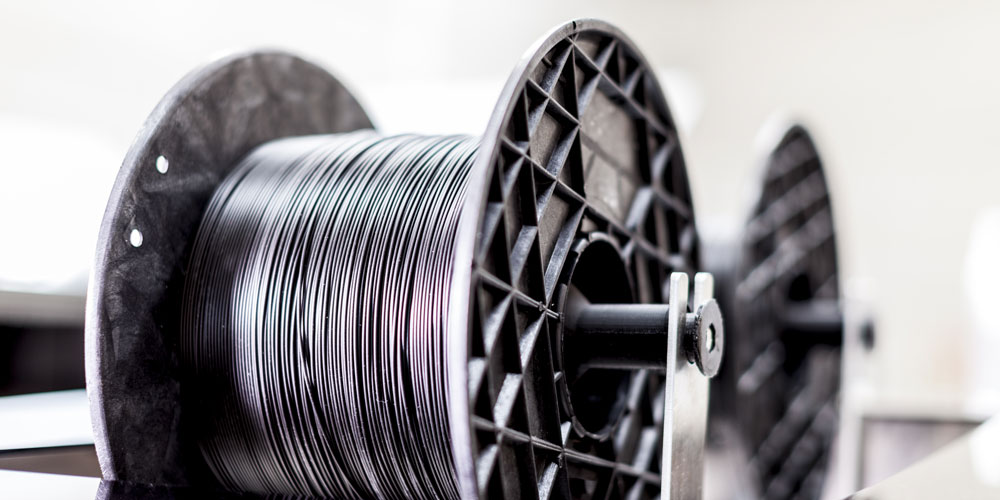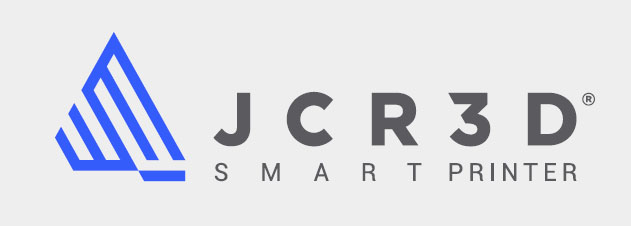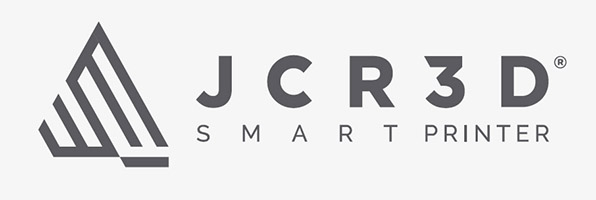
10 Dic 3D Printing Materials: What Material to Choose for Each Application
Selecting the right materials for 3D printing is key to the success of its final product. Depending on what the printed piece is going to be used for (design verification, functional testing, functionality with mechanical and thermal requirements, etc.), one type of material or another will be chosen.
Criteria to consider when choosing materials for FFF (Fused Filament Fabrication)
Choosing the most suitable material from the variety of materials on the market may sometimes seem difficult. To find the most appropriate material for each application, it is important that you ask yourself the right questions from the beginning.
Is high mechanical performance required of my piece?
The technical aspects required of the piece to be printed and the applications it will be used for must be considered. For example, if you want a piece that is impact resistant, ABS, polycarbonate, nylon, or ASA are suitable. For greater thermal resistance, polycarbonate, ABS, PP, or nylon can be used. If chemical resistance is needed, PET or PP could be the solution. To manufacture flexible objects, TPE and TPU fit the bill. In addition, polypropylene and nylon can also be used to produce semi-flexible or semi-rigid objects.
What precision and quality do I need in my pieces?
The degree of precision and detail in the 3D printed piece depends in large part on the quality of the material and its properties.
There are materials that have been specifically designed for an exceptional finish in regards to printing precision. This has been achieved through improvements in layer adhesion and material flow. This, along with the precision of the printer, make it possible to produce optimal pieces for applications that demand high performance and high tolerance.
Aesthetic appearance, resolution, minute details, and surface quality
In 3D printing, aesthetic appearance is determined by the Z resolution used (depending on the layer shift, you will have higher surface quality or faster print speed). Therefore, you have to consider whether you want surface quality or print speed).
The quality of the material along with other parameters to determine—such as Z resolution, nozzle diameter, speeds, retraction, and more—will determine if you are able to produce a piece with higher surface quality, more details, or minimal thicknesses.
When we speak of 3D printing, do not forget that we are working in 3 dimensions. The aesthetic appearance of a piece (surface quality) is determined by the Z resolution we are working with. Meanwhile, the resolution of the other two axes, X and Y, give us the minute details and minimal thicknesses we are able to produce. This resolution on the X and Y axes depends directly on the quality of the material, nozzle type, speeds, and more.
The quality of the material along with the nozzle diameter affect the visual quality (surface quality of the piece) and the resolution on the X and Y axes. With a diameter of less than 0.80, for example 0.4 or less, and a Z resolution of 100 microns, you will get excellent surface quality on the piece.
Slow printing and good Z resolution allow for clean surfaces with very good surface quality. A diameter of 0.25 mm will print pieces in great detail (X and Y axes resolution) whereas a diameter greater than 0.80 is better suited for greater productivity. The latter allows for faster printing at the expense of some of the piece’s surface quality (Z resolution) and the ability to print in less detail (X and Y resolution).
Depending on the 3D printing material chosen, the finish may differ (matte, shiny, translucent, etc.) and the possibilities for post-processing will also be different. Materials such as PLA, ABS, and composites (reinforced materials) can easily be painted, polished, or varnished.
Geometric characteristics
If the piece you want to print has protrusions or projections, internal chambers and circuits, or other aspects, it is very likely it will be necessary to create supports in order to produce the required geometry. In these cases, we need to use a support material. The appropriate support material is chosen based on the material the piece is made of. It is very important to take the compatibility between different materials into account when it comes to selecting the support material.
Quick guide to 3D printing materials
The most commonly used materials
PLA and ABS
PLA is among the most commonly used 3D printing materials for its low cost and quick prototyping. This biodegradable filament is one of the simplest materials for printing. It offers good layer adhesion and good surface finish that together allow for excellent detail. However, it is not suitable for a final piece, as its mechanical properties are not ideal for some functional applications.
ABS is more mechanically and thermally resistant, in addition to being easier to post-process. Therefore, it can be used as tooling. On the other hand, it is a bit more complex to print than PLA.
TPU and TPE
These materials are suitable for applications that require flexibility. They are highly resistant to impacts and wearing and are also very resistant to mechanical action and torsion. Both are suitable for creating pieces that have properties similar to rubber.
They allow for finishes that are smooth to the touch. For these reasons, they are highly valued by both the automobile and toy industries.
Resistant to chemical agents and for food use
Copolyesther
PETG, for example, is one of the most used materials for printing objects that are in contact with food due to its high resistance to chemical agents.
PETG is highly mechanisable and impermeable. It prints very easily, just like PTA.
Polypropylene – PP
Some polypropylenes may also be suitable for manufacturing containers for liquids or food (though it is necessary to consider the printing model used, given that low layer adhesion could lead to bacteria proliferating between them).
PP offers the advantage of greater chemical resistance, flexibility, and resistance to water and heat. It perfectly adapts to a wide variety of automotive and food uses (hinges, belts, containers, packaging).
Technical polymers
Technical polymers are better adapted to creating complex models, functional prototypes, and finished pieces for industrial applications.
Nylon
Nylon is a strong yet flexible material with good resistance to chemicals, impacts, and abrasion. It is particularly well-suited to printing more complex, functional, and long-lasting pieces, such as gears for the automotive sector.
ASA
ASA is a variation of ABS that offers greater durability, especially in outdoor settings, given that it is highly resistant to UV rays, impacts, and wearing. ASA is appropriate for all types of outdoor applications.
Polycarbonate – PC
Polycarbonate is a strong material that is highly resistant to impacts and withstands high temperatures (up to 110º C). PC is used to produce highly-resistant pieces for the engineering, aerospace, and electronics industries. It is also used for aesthetic purposes, given its transparency.
Fibres
It is becoming more and more common to find materials to which carbon fibres or glass fibres have been added, thus creating composites. This is because carbon improves mechanical resistance and is lighter. Glass allows for increased rigidity, greater layer adhesion, and improved mechanical resistance. This type of material is mainly for industrial uses.
The 3D printing industry is constantly evolving. It offers ever more efficient applications and filaments. At JCR 3D, we have a department specialised in testing and selecting the best materials for industrial use available on the market.
JCR 3D smart printers are able to work with materials from the main manufacturers on the market, given that they are machines that are designed to be open. At JCR 3D, we offer recommendations on materials as well as advice on which materials to use with our printers.
Our team can offer you expert advising and a detailed printing guide with the optimal printing conditions for each material as well as recommendations on applications and limitations.
Request a demo piece or view the technical datasheets on our materials.


